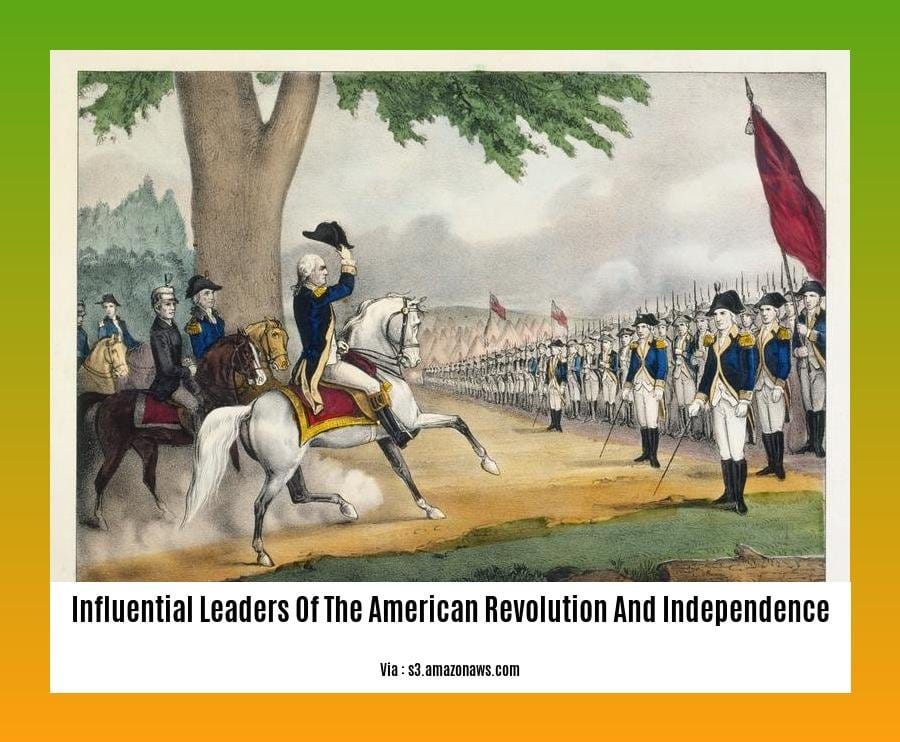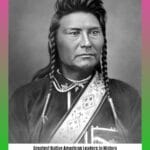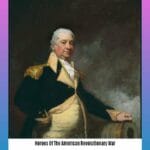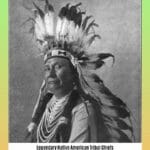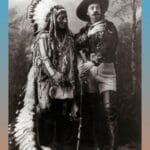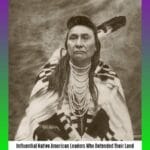Explore four significant leaders— Baron von Steuben, Casimir Pulaski, The Marquis de Lafayette, and Tadeusz Kościuszko—in order to enter the exciting realm of the American Revolution and Independence. Their vital contributions to the struggle for American freedom will help readers to better understand the complexity of this age.
Key Takeaways:
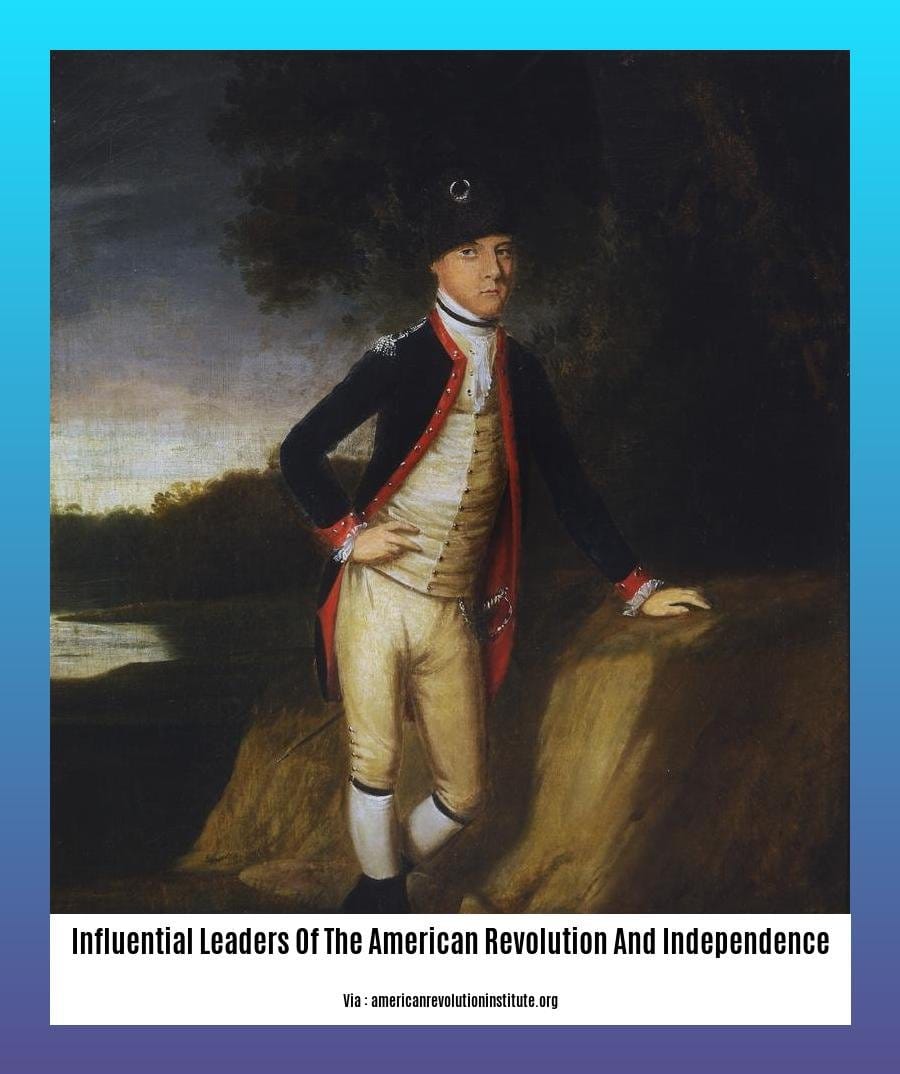
- Native American chief Joseph Brant sought an alliance between the Iroquois tribes and Britain.
- King George III was the British monarch during the American Revolution.
- George Washington commanded the Continental Army.
- Benjamin Franklin was a key diplomat and inventor.
- Francis Marion, known as the “Swamp Fox,” was a notable guerilla fighter.
Influential Leaders of the American Revolution and Independence
Many powerful leaders of the American Revolution and independence arose when it broke out, therefore determining the future of the country. Their relentless perseverance, clever moves, and visionary leadership drove the colonies toward their freedom.
Officials and Patriots
Respected Commander-in-Chief of the Continental Army, George Washington was a military genius. The American troops were guided over the difficult years of war by his sharp leadership, strategic genius, and relentless determination.
Renaissance guy at heart, Benjamin Franklin was a diplomat, inventor, and relentless supporter of independence. His diplomatic skills guaranteed vital French backing, while his scientific creations—such as the lightning rod—helped the fledgling country grow.
Frontier Champions and Guerrilla fighters
The great “Swamp Fox,” Francis Marion oversaw a very successful guerilla operation in South Carolina. For the British, his evasive strategies and close knowledge of the terrain made him a dangerous opponent.
Skilled warrior and orator Mohawk chief Joseph Brant was instrumental in helping the Iroquois Confederacy and the British form an alliance. His diplomacy and military skill greatly changed the direction of the war.
The King’s Ruling Decree
Though he lived far from the colonies, King George III of Great Britain was pivotal in the events before the revolution. Tensions were raised by his policies and rigidity toward colonial complaints, which finally drove the colonists toward freedom.
The United States bears a legacy from these powerful leaders of the American Revolution and independence. Generations of Americans now are still motivated by their vision, leadership, and tenacity.
Explore the lives and legacies of the founding fathers of the United States, the heroes of the American Revolutionary War, and other legendary rebels against British rule who shaped the course of American history.
The Marquis de Lafayette
Fighting in the American Revolutionary War, French aristocrat and military officer Marie-Joseph Paul Yves Roch Gilbert du Motier Marquis de Lafayette September 6, 1757 found him born at Chavaniac, France. While Lafayette was two years old, his father was killed in battle; his mother passed away when he was thirteen. His paternal grandmother reared him and incilled in him a love of liberty and equality.
At eighteen Lafayette enlisted in the French army. He joined the Noailles Dragoon Regiment commissioned as a captain. He sailed to America in 1777 in order to join the Continental Army. Appointed a major general by George Washington, he spent six weeks on his staff.
At the Battle of Brandywine Lafayette fought with distinction. Though he was injured in the leg, he stayed in the field and encouraged his men to organize. He battled in Monmouth and Yorktown as well.
Lafayette returned to France following the war to keep supporting the American cause. He was fundamental in the French Revolution. He was appointed head of the National Guard and chosen member of the National Assembly.
May 20, 1834 saw Lafayette pass away in Paris. His tomb is in Picpus Cemetery.
Key Takeaways:
- Lafayette was a French aristocrat who fought in the American Revolutionary War.
- He was a major general in the Continental Army and served on George Washington’s staff.
- He fought with distinction at the battles of Brandywine, Monmouth, and Yorktown.
- After the war, he returned to France and played a key role in the French Revolution.
Most Relevant URL Source:
- American Battlefield Trust: Marquis de Lafayette
Tadeusz Kościuszko
Key Takeaways:
- 4. Tadeusz Kościuszko, a Polish military engineer, played a vital role in the American Revolution.
- He designed and oversaw the construction of fortifications at West Point, providing a strategic advantage to the Continental Army.
- His expertise in military engineering proved crucial in several key battles, including the Battle of Saratoga.
- After the American Revolution, 4. Tadeusz Kościuszko returned to Poland and led an insurrection against Russian and Prussian rule.
- He became a national hero in Poland, where his legacy as a freedom fighter is still celebrated today.
Citation:
- Britannica, The Editors of Encyclopedia. “Tadeusz Kosciuszko.” Encyclopedia Britannica,
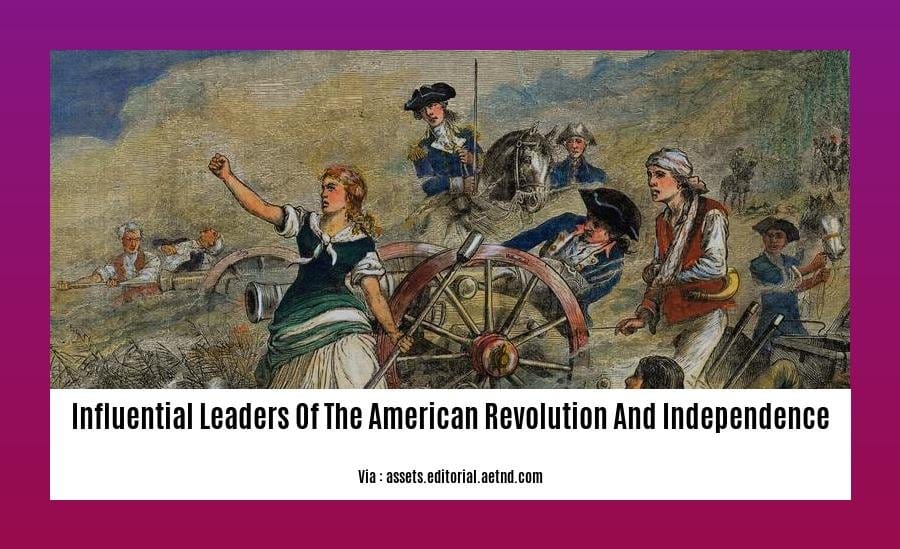
q
- Discover Long Black Pepper: Flavor & Health Benefits - April 25, 2025
- Shocking Twists: The Grownup Review: Unreliable Narration - April 25, 2025
- A Quiet Place Book vs Movie: A Deep Dive - April 25, 2025
